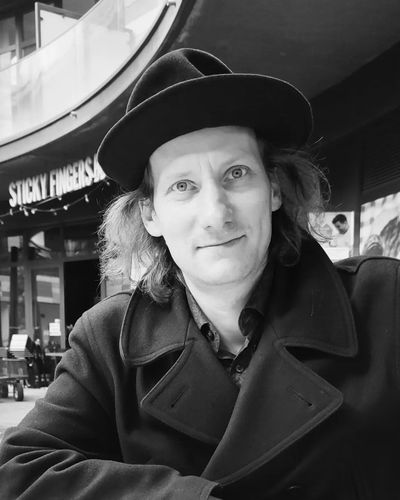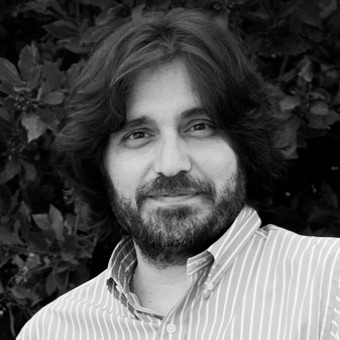Difference between revisions of "0/en"
m |
m |
||
| (14 intermediate revisions by the same user not shown) | |||
| Line 1: | Line 1: | ||
| − | {{epi-en|- | + | {{epi-en|-78}} |
{| width="100%" | {| width="100%" | ||
|width="33%" valign="top"| | |width="33%" valign="top"| | ||
| Line 14: | Line 14: | ||
{{/x|yellow|{{:D/en}}|D/en}} | {{/x|yellow|{{:D/en}}|D/en}} | ||
|} | |} | ||
| + | [https://www.youtube.com/channel/UCAoPy8AvtF55dh9SBuevXAg Our YouTube channel] | ||
| − | |||
| − | |||
| − | |||
| − | |||
| − | |||
| − | |||
| − | |||
| − | |||
| − | |||
| − | |||
| − | |||
{{#css: | {{#css: | ||
h1#firstHeading { | h1#firstHeading { | ||
| − | margin-top: - | + | margin-top: -14px !important; |
| − | padding-top: | + | padding-top: 20px !important; |
line-height: 1.1em; | line-height: 1.1em; | ||
| − | font-size: | + | font-size: 22pt; |
page-break-after: avoid; | page-break-after: avoid; | ||
| − | + | padding-bottom: 10px !important; | |
text-align: left; | text-align: left; | ||
color: red; | color: red; | ||
| − | margin-bottom: | + | margin-bottom: 57px !important; |
| − | |||
| − | |||
| − | |||
| − | |||
} | } | ||
#siteNotice { | #siteNotice { | ||
| Line 48: | Line 34: | ||
font-size: 0.7em; | font-size: 0.7em; | ||
display: block !important; | display: block !important; | ||
| + | } | ||
| + | #contentSub, #contentSub2 { | ||
| + | display: none !important; | ||
} | } | ||
}} | }} | ||
{{#css:MediaWiki:center.css}} | {{#css:MediaWiki:center.css}} | ||
| + | {{DISPLAYTITLE:Mystic's Musical Monuments}} | ||
| + | |||
| + | [[File:DatabaseMonuments.png|800px|link=]] | ||
| + | |||
| + | {| class="wikitable" | ||
| + | |- | ||
| + | | [[File:ARISTOTELIS_ROMANOS.jpg|400px|link=]] || | ||
| + | == Development — author of the idea == | ||
| + | <big>Romanos Aristotelis, from St. Petersburg, comes from a family of Greeks who emigrated to Russia in the late 18th century.</big> | ||
| + | |||
| + | |||
| + | <big>He graduated from the Faculty of Philology of St. Petersburg State University, specializing in Greek Language & Literature, IT Linguistics and Medieval Greek Paleography.</big> | ||
| + | |||
| + | |||
| + | <big>He has been working in the field of software engineering and computer linguistics in the IT company Etersoft.</big> | ||
| + | |||
| + | |||
| + | <big>From 2008 to 2019, he was in Greece on the Holy Mountain of Athos studying Greek medieval musical manuscripts and literature, the living mystical monastic chant tradition and ascetic spiritual monastic life.</big> | ||
| + | |||
| + | |||
| + | <big>In 2021 he enrolled at the University of Macedonia in Thessaloniki in the Department of Music to implement informative and therapeutic ideas in scientific research.</big> | ||
| + | |- | ||
| + | |[[File:Patronasphoto.jpg|400px|link=]] | ||
| + | | | ||
| + | == Professor — scientific supervisor of the project == | ||
| + | Dr. Georgios Patronas. | ||
| + | |||
| + | |||
| + | He is a music educator, Chanting Interpreter and Researcher. He teaches at the Department of Music Science and Art of the University of Macedonia (Greece-Thessaloniki) as a member of the SPD «Teaching in Byzantine music with emphasis on execution». He has completed undergraduate and postgraduate studies abroad in Music Education and Didactics in Piano and Ensemble. He completed his doctoral studies at the University of Macedonia in the direction of the Didactic Music. His postdoctoral research was: The Kekragaria of Jacob Protopsalt ― Interpretation and performance ― Didactic approach. He did additional special studies in «Theory of Music Learning and Teaching». He is the Chief musician of the Byzantine choir «Euromoundes», Protopsalt of the Church of St. Therapontos K. Toumbas of Thessaloniki, Artistic Director of St. Therapon’s Music Lab in Kato-Toumba and the Orchestra of Greek Music. | ||
| + | |} | ||
Latest revision as of 14:11, 25 October 2022
I sing, therefore I am
God-inspired music monuments
|
Singing - Life All those to whom the singing is like other breath, mystical spiritual practice, the source of inspiration, mentor in contemplation and medicine for his soul. Here are published and discussed God-inspired monuments of singing art and everything related to singing. Nord land In this land are published and discussed melodies and chants of the so-called «Znamenno singing» or otherwise: Chants of old slavic churchs, «Nord patristical singing», the old slavic and old russian singing, stolpovoi, putevoi and demestvo singing, nord embodiment in a sound of the heavenly singing. Art - Technique -Tradition |
East land In this land are published and discussed melodies and chants of the so-called «Byzantine singing» or otherwise: chants of ancient Church, «East patristical singing», the Greek, East-Slavic and Arab singing, east embodiment in a sound of the heavenly song. Digital writing of traditional music notations on our pages is carried out through the system ΕΥΔΡΟΜΟΥΝΤΕΣ (Serafim Unicode) and linear notes through the mediawiki extension Score of the system Lilypond. 𝝙𝝙𝁇𝂅𝂅𝝾 𝁇𝁜𝝾 𝁑𝁿𝝾 𝁇𝁿𝝾 𝁕𝁿𝝽𝝰 𝁇𝃰𝂏𝝥𝝰 𝁑𝝰 𝁇𝁿𝞃𝞀𝝸 𝁇𝃰𝁚𝝸 𝁑𝝹𝝰𝝸 𝁑𝝰𝝸 𝁑𝝪𝝸 𝃰𝞄𝝸 𝁇𝁿𝁛𝟂 𝁑𝁿𝟂 𝂪 𝁆𝁿𝁚𝝹𝝰𝝸 𝁑𝁿𝝖𝁑𝂅𝂅𝝲𝝸 𝁇𝃲𝝸 𝁇𝝸 𝁉𝟂 𝁑𝟂 𝁇𝃰𝝥𝝼𝝴 𝁆𝁿𝁚𝝴𝞄 𝁑𝁿𝝻𝝰 𝁑𝁿𝝰 𝁑𝁿𝝰 𝁇𝂏𝝰 𝁑𝁜𝂅𝝰 𝁑𝂏𝝰 𝁇𝁚𝂴𝝰 𝁑𝝰 𝁑𝁿𝝰 𝁆𝂅𝂅𝞃𝝸𝂳 West land In this land are published and discussed melodies and chants of the so-called «Gregorian» and «Ambrosian» singings: chants of old latin churchs, «West patristical singing», ancient roman singing, nord embodiment in a sound of the heavenly song. |
Melody - Meaning In our country there are those who are sure that every melody, as well as the word, expresses spiritual meaning. The meanings expressed in the sound of melodies can have healing power or, on the contrary, destructive and murderous. South land In this land are published and discussed all other melodies and chants bearing the stamp of divine inspiration: the Georgian singing, supralskiy singing etc... which can apply for a high rank to be a terrestrial image of an eternal heavenly song. Person of chanter – Sanctity |

 |
Development — author of the ideaRomanos Aristotelis, from St. Petersburg, comes from a family of Greeks who emigrated to Russia in the late 18th century.
|

|
Professor — scientific supervisor of the projectDr. Georgios Patronas.
|